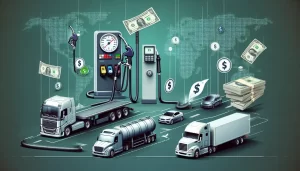
Everything You Need to Know About Auto Transport: Process, Benefits & What to Expect
If you’re relocating, buying a car online, or sending a vehicle to a family member, auto transport offers a safe, convenient, and stress-free solution. But many first-time shippers don’t know where to begin or what to expect. That’s why we’ve created this comprehensive guide to help you understand the vehicle transport process, its value, and how FCT Transport makes it easy from start to finish.
Is Auto Transport Worth It?
Yes—auto transport is absolutely worth it for most people. Driving long distances can be costly, time-consuming, and physically draining. Between fuel, lodging, food, and the wear and tear on your vehicle, the expenses add up quickly. Factor in the risk of delays, breakdowns, and unpredictable weather, and it becomes clear that professional transport is often the smarter choice.
FCT Transport helps you avoid these headaches by offering secure, streamlined car shipping handled by trained professionals. Whether you’re moving across the state or across the country, we handle the logistics so you don’t have to.
How Auto Transport Works
The auto shipping process is simpler than most people think. Here’s a step-by-step overview of how it works with FCT Transport:
- Request a Personalized Quote
We don’t use automated quote generators. Instead, you’ll receive a tailored quote based on your exact route, vehicle type, and preferences (such as open or enclosed transport). No inflated prices—just honest, competitive rates. - Schedule Pickup
Once you approve the quote, we’ll coordinate a convenient pickup time. Our transport specialists will walk you through the prep process so your vehicle is ready on pickup day. - Vehicle Inspection & Loading
A carrier will inspect your car with you present, documenting any existing damage. Then your vehicle is safely loaded onto the transport truck. - Transit & Updates
Your vehicle is transported to its destination by a licensed, insured carrier. You’ll receive updates along the way and can contact our team anytime for status checks. - Delivery & Final Inspection
At delivery, the driver performs a final inspection with you to confirm your vehicle arrived in the same condition. All that’s left is for you to enjoy the convenience of a seamless experience.
What to Expect from FCT Transport
When you choose FCT Transport, you’re working with a company that puts service first. Our team is dedicated to clear communication, honest pricing, and safe delivery of every vehicle. You’ll never deal with confusing automated systems or surprise fees. Instead, you’ll get:
– Direct communication with real people
– Transparent quotes with no upcharges
– Door-to-door or terminal-to-terminal options
– Open or enclosed transport to match your needs
– Updates throughout your vehicle’s journey
– A responsive support team that cares
Common Auto Transport Terms (Quick Glossary)
Here are a few helpful terms to know when shipping your vehicle:
– Bill of Lading (BOL): A legal document that outlines vehicle condition, pickup/delivery details, and transport terms. You’ll sign this at both pickup and delivery.
– Carrier: The company (or driver) responsible for physically transporting your vehicle.
– Broker: A third party that connects customers to carriers. At FCT Transport, we simplify this process by working only with trusted, insured carriers.
– Open Transport: The most common and cost-effective shipping method. Your vehicle is transported on an open trailer.
– Enclosed Transport: A premium option that protects vehicles inside a covered trailer—ideal for classic, luxury, or exotic cars.
– Door-to-Door Service: The vehicle is picked up and dropped off as close as possible to your specified locations.
– Transit Time: The total time from pickup to delivery, depending on distance, route, and traffic/weather conditions.
Benefits of Choosing a Professional Auto Transport Service
Still wondering if vehicle shipping is the right choice? Here are the key benefits:
– Convenience: Save time and energy by letting professionals handle the logistics.
– Safety: Protect your car from unnecessary mileage, accidents, and harsh road conditions.
– Flexibility: Choose pickup and drop-off dates that work for you.
– Affordability: When you factor in travel expenses and time, shipping is often more cost-effective than driving.
– Peace of Mind: With FCT Transport, you’re kept in the loop every step of the way.
Why Work with FCT Transport
FCT Transport is a trusted name in the auto shipping industry because we deliver more than just vehicles—we deliver confidence. Our process is built around service, not shortcuts. From the first quote to the final drop-off, we make sure your experience is smooth, safe, and stress-free.
Whether you’re a first-time shipper or a returning customer, our mission is simple: provide personalized, professional car shipping that respects your time, your vehicle, and your trust.



